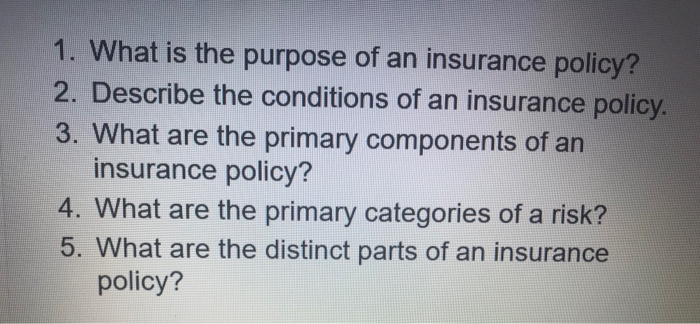Pacific Prime for Dummies
Wiki Article
What Does Pacific Prime Mean?
Table of ContentsWhat Does Pacific Prime Mean?Not known Details About Pacific Prime See This Report on Pacific PrimeGet This Report about Pacific PrimeLittle Known Questions About Pacific Prime.

This is since the information were accumulated for a period of solid financial performance. Of the approximated 42 million people that were without insurance, all but regarding 420,000 (about 1 percent) were under 65 years of age, the age at which most Americans come to be eligible for Medicare; 32 million were adults between ages 18 and 65, around 19 percent of all grownups in this age; and 10 million were youngsters under 18 years of age, concerning 13.9 percent of all children (Mills, 2000).
These quotes of the variety of persons uninsured are produced from the yearly March Supplement to the Current Populace Study (CPS), conducted by the Census Bureau. Unless otherwise kept in mind, nationwide price quotes of people without medical insurance and percentages of the populace with various type of insurance coverage are based on the CPS, the most commonly utilized resource of price quotes of insurance policy protection and uninsurance prices.
Pacific Prime for Dummies

Still, the CPS is especially useful due to the fact that it creates annual estimates reasonably swiftly, reporting the previous year's insurance protection approximates each September, and since it is the basis for a consistent collection of price quotes for more than twenty years, enabling for analysis of trends in coverage over time. For these factors, in addition to the extensive use of the CPS in various other research studies of insurance protection that are presented in this record, we count on CPS estimates, with constraints kept in mind.

The price quote of the number of without insurance people expands when a populace's insurance coverage status is tracked for a number of years. Over a three-year period starting early in 1993, 72 million people, 29 percent of the U.S. https://pacificpr1me.blog.ss-blog.jp/2024-04-03?1712088442. population, lacked insurance coverage for at the very least one month. Within a single year (1994 ), 53 million individuals experienced a minimum of a month without insurance coverage (Bennefield, 1998a)
Six out of every 10 without insurance grownups are themselves used. Although working does improve the chance that and one's member of the family will certainly have insurance coverage, it is not a guarantee. Even participants of families with 2 permanent wage income earners have almost a one-in-ten possibility of being uninsured (9.1 percent uninsured price) (Hoffman and Pohl, 2000).
Facts About Pacific Prime Revealed
New immigrants represent a significant proportion of individuals without wellness insurance. One analysis has actually attributed a considerable section of the current development in the size of the united state without insurance populace to immigrants who arrived in the nation in between 1994 and 1998 (Camarota and Edwards, 2000). Current immigrants (those that came to the United States within the past 4 years) do have a high price of being without insurance (46 percent), yet they and their youngsters make up simply 6 percent of those without insurance coverage nationally (Holahan et al., 2001).The relationship between wellness insurance policy and accessibility to care is well developed, as documented later in this chapter. Although the relationship in between medical insurance and health Discover More Here results is neither straight nor basic, a comprehensive clinical and health services research literature links medical insurance coverage to improved accessibility to care, better high quality, and improved personal and populace wellness condition.
Levels of analysis for taking a look at the effects of uninsurance. It focuses especially on those without any kind of health insurance coverage for any kind of size of time.
Some Known Factual Statements About Pacific Prime
The issues encountered by the underinsured remain in some areas comparable to those encountered by the uninsured, although they are generally less severe. maternity insurance for expats. Uninsurance and underinsurance, nevertheless, entail distinctly various plan concerns, and the methods for resolving them might differ. Throughout this study and the five reports to adhere to, the primary emphasis is on persons without medical insurance and thus no aid in paying for health care past what is offered with charity and safety internet organizations
Medical insurance is a powerful factor influencing receipt of care due to the fact that both individuals and doctors respond to the out-of-pocket cost of services - https://www.tumblr.com/pacificpr1me/746587211067195392/we-are-an-award-winning-insurance-intermediary-of?source=share. Medical insurance, nevertheless, is neither required nor sufficient to acquire access to clinical solutions. The independent and direct result of health and wellness insurance policy protection on access to wellness solutions is well established.
Others will get the health and wellness care they require even without medical insurance, by spending for it out of pocket or seeking it from providers that supply treatment free or at very subsidized rates. For still others, wellness insurance alone does not make sure invoice of care due to various other nonfinancial obstacles, such as a lack of health treatment companies in their neighborhood, restricted accessibility to transport, illiteracy, or etymological and social distinctions.
Fascination About Pacific Prime
Official study about uninsured populaces in the USA dates to the late 1920s and very early 1930s when the Board on the Price of Treatment produced a series of reports regarding financing doctor workplace sees and hospitalizations. This issue became salient as the numbers of medically indigent climbed up during the Great Depression.Report this wiki page